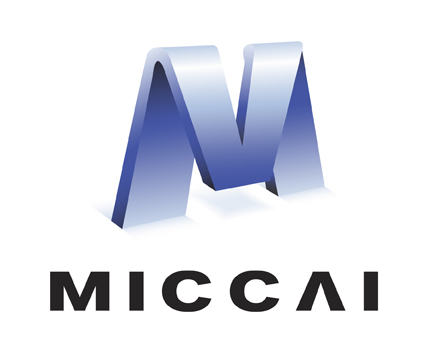Abstract
Prediction of high grade ovarian cancer on proteomic data is a clinical challenge. Besides, it offers the potential for earlier intervention to increase overall survival, as well as guides the prophylactic ovarian removal to avoid unnecessary early menopause. In this work, we propose a model that learns how to detect ovarian cancer on images from uterine liquid proteomic data. The contributions of this work are two-fold. First, we propose an original method to use proteomic data without direct matching with the existing protein libraries as in the traditional method. The gray-scale peptide image generated by our method contains almost all information from mass spectrometry. Second, we pioneer in analyzing the uterine liquid proteomic data with deep convolutional neural networks. Specifically, we design a feature extractor consisting of stacked asymmetric convolutional layers, which could pay more attention to multiple compounds in different retention times and isotopes in similar mass/charge than symmetric convolutions. Another novelty is trying to find the patches contributing more in improving both sensitivity and specificity. In addition, we add an auxiliary classifier module near the end of training to push useful gradients into the lower layers and to improve the convergence during training. Compared with traditional proteome analysis, experimental results demonstrate the effectiveness and superiority of our model in high grade ovarian cancer prediction.
Access this chapter
Tax calculation will be finalised at checkout
Purchases are for personal use only
Similar content being viewed by others
References
Vaughan, S., Coward, J.I., Bast, R.C., et al.: Rethinking ovarian cancer: recommendations for improving outcomes. Nat. Rev. Cancer 11, 719–725 (2011)
Harmsen, M.G., Jong, M.A., Hoogerbrugge, N., et al.: Early salpingectomy (TUbectomy) with delayed oophorectomy to improve quality of life as alternative for risk-reducing salpingo-oophorectomy in BRCA1/2 mutation carriers (TUBA study): a prospective nonrandomized multicentre study. BMC Cancer 15, 593–601 (2015)
Karlan, B.Y., Thorpe, J., Watabayashi, K., et al.: Use of CA125 and HE4 serum markers to predict ovarian cancer in elevated-risk women. Cancer Epidemiol. Biomarkers Prev. 23, 1383–1393 (2014)
Sölétormos, G., Duffy, M.J., Suher, O.A.H., et al.: Clinical use of cancer biomarkers in epithelial ovarian cancer: updated guidelines from the european group on tumor markers. Int. J. Gynecol. Cancer 26, 43–51 (2015)
Jacobs, I.J., Menon, U., Ryan, A., et al.: Ovarian cancer screening and mortality in the UK collaborative trial of ovarian cancer screening (UKCTOCS): a randomised controlled trial. Lancet 387, 945–956 (2016)
Rosenthal, A.N., Fraser, L., Philpott, S., et al.: Evidence of stage shift in women diagnosed with ovarian cancer during phase II of the United Kingdom familial ovarian cancer screening study. J. Clin. Oncol. 35, 1411–1420 (2017)
Harel, M., Oren-Giladi, P., Kaidar-Person, O., et al.: Proteomics of microparticles with SILAC quantification (PROMIS-Quan): a novel proteomic method for plasma biomarker quantification. Mol. Cell. Proteomics 14, 1127–1136 (2015)
Georgina, D.B., Keren, B., Stav, S., et al.: Microvesicle proteomic profiling of uterine liquid biopsy for ovarian cancer early detection. Mol. Cell. Proteomics 18(5), 865 (2019)
Hiroshi, T., Tomas, C., Tobias, K., et al.: MS-DIAL: data-independent MS/MS deconvolution for comprehensive metabolome analysis. Nature Meth. 12(6), 523–526 (2015)
Christian, S., Vincent, V., Sergey, L., et al.: Rethinking the inception architecture for computer vision. In: IEEE Conference on Computer Vision and Pattern Recognition, pp 2818–2826 (2016)
Chen-Yu, L., Saining, X., Patrick, G., et al.: Deeply-supervised nets. In: Artificial Intelligence and Statistics, pp. 562–570 (2015)
Acknowledgement
The study was supported by the National Nature Science Foundation of China under Grant 81974276.
Author information
Authors and Affiliations
Corresponding author
Editor information
Editors and Affiliations
Rights and permissions
Copyright information
© 2020 Springer Nature Switzerland AG
About this paper
Cite this paper
Yuan, C., Tang, Y., Qian, D. (2020). Ovarian Cancer Prediction in Proteomic Data Using Stacked Asymmetric Convolution. In: Martel, A.L., et al. Medical Image Computing and Computer Assisted Intervention – MICCAI 2020. MICCAI 2020. Lecture Notes in Computer Science(), vol 12262. Springer, Cham. https://doi.org/10.1007/978-3-030-59713-9_26
Download citation
DOI: https://doi.org/10.1007/978-3-030-59713-9_26
Published:
Publisher Name: Springer, Cham
Print ISBN: 978-3-030-59712-2
Online ISBN: 978-3-030-59713-9
eBook Packages: Computer ScienceComputer Science (R0)




